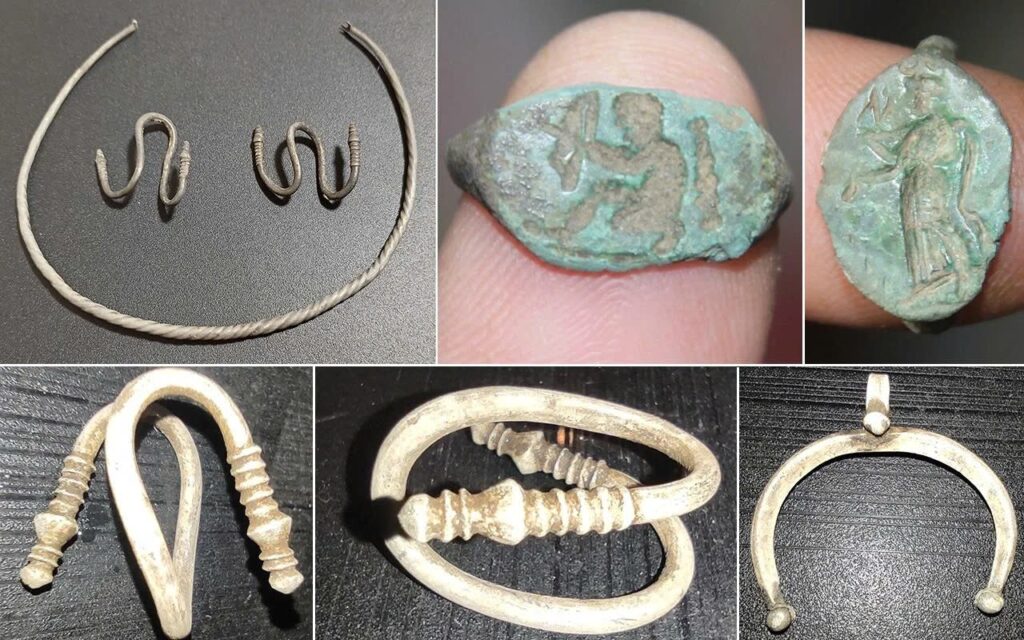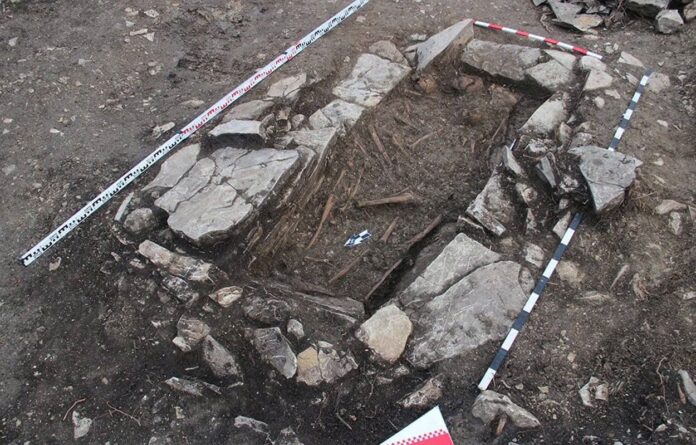A Window into 4th-3rd Century BC Russia

In the heart of Kuban, a region nestled in southern Russia’s North Caucasus, archaeologists have unearthed a remarkable piece of history. A team from the Institute of Archaeology of the Russian Academy of Sciences has discovered a burial necropolis dating back to the 4th-3rd century BC. This find offers a fascinating glimpse into the lives of ancient inhabitants of the region.
From Construction Site to Archaeological Wonder

The discovery came as a surprise during the construction of a federal highway. As workers prepared the land, they unknowingly stumbled upon an ancient floodplain terrace hiding centuries-old secrets beneath its surface. The necropolis revealed rectangular burial pits lined with flat slabs of marl or sandstone, testament to the care with which the ancients laid their dead to rest.
A Tapestry of Lives Uncovered
The Lovers’ Tomb: Burial No. 19

One of the most intriguing finds was Burial No. 19, containing the remains of a man and a woman. Alongside their skeletal remains, archaeologists found bronze rings, a spear, and an iron tip. These artifacts paint a picture of the couple’s status and perhaps even their occupations in life.
A Prominent Quintet: Burial No. 10
Burial No. 10 held the remains of five individuals, accompanied by an impressive array of grave goods. Multiple spears, silver decorative objects, iron knives, and bronze rings were discovered, including one ring bearing the image of a two-column temple portico. The abundance and quality of these items suggest these individuals held significant standing in their community.
A Pristine Time Capsule: Burial No. 15

In a stroke of archaeological fortune, Burial No. 15 was found largely undisturbed. This rare find yielded a Heraclean amphora, a black-gloss bowl, bronze and iron rings, and a bronze bracelet. These well-preserved artifacts provide invaluable insights into the craftsmanship and material culture of the period.
Beyond the Graves: Evidence of Trade and Ritual

The necropolis site offered more than just burial chambers. Scattered around the area, archaeologists uncovered numerous amphorae and tableware, including jugs and bowls. Many of these items were imported from Heraclea Pontica, a coastal city in ancient Bithynia. This discovery hints at extensive trade networks and the use of imported goods in funerary rituals.
A Bridge Between Past and Present

As archaeologists continue to study the Kuban necropolis, each artifact and burial tells a story of the region’s rich cultural heritage. This remarkable find not only sheds light on the lives of those who lived over two millennia ago but also strengthens the connection between modern-day Kuban and its ancient roots. The necropolis stands as a testament to the enduring human spirit and our timeless desire to honor and remember those who came before us.

